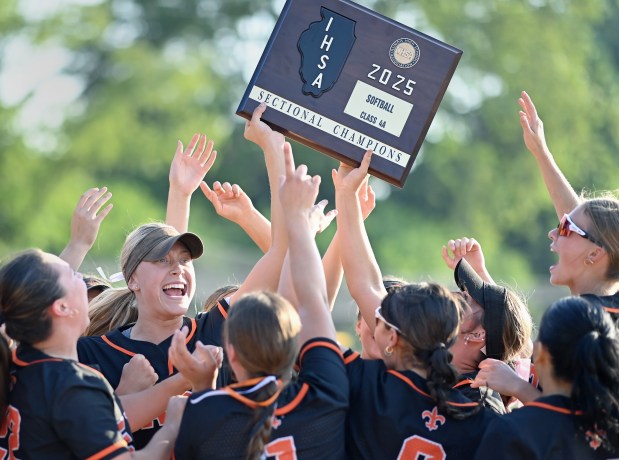Valentine’s Day might be the holiday of love, but something else was heating up this month.
The first half of the month is tied for the second warmest in Chicago on record, the latest in what has been an “exceptionally warm” winter, according to Ricky Castro, a meteorologist at the National Weather Service in Romeoville. The first 14 days in February were 12 degrees above normal, Castro said.
“No matter how you slice it, when you’ve built up this kind of an anomaly the first half of the month, it’s going to end up way above average,” he said.
Finding comparable temperatures requires looking back nearly 150 years. The warmest first half of February was in 1882, with an average daily temperature of 41.4, Castro said. This year is tied with 1877, with an average of 38.6. In more recent history, Castro said 1990 reached 36.4.
What causes above average temperatures?
These above-average temperatures can largely be attributed to a “strong” El Niño and long-term warming due to climate change, according to Trent Ford, the Illinois state climatologist.
El Niño is a natural climate phenomenon where sea surface temperatures are warmer than average in the central and eastern Pacific Ocean near the equator, according to the weather service. Occurring on average every two to seven years, El Niños usually begin in the summer and peak in intensity during the winter.
For Chicago, this has meant a milder and drier winter overall. But Ford said it doesn’t mean there can’t be extreme cold events, like the stretch of subzero temperatures that hit in mid-January.
“Climatological winter — December, January, February together, so far with just a couple weeks of February left — has also been a top five warmest winter season on record in Chicago,” Ford said. “It’s been the whole season.”
Warming winter temperatures are also the most “substantial” and most “consistent” signal of climate change, Ford said. While temperatures like this year’s may not become the norm every winter, Ford said there’s a strong possibility they will become more frequent than in the past 1,500 years.
“No matter the model, no matter the scenario, everything all points to warmer winters,” Ford said. “We can’t say exactly how much this winter’s mild weather is due to climate change versus El Niño, but there is an important role that climate change is playing.”
It’s possible that the former location of the official Chicago climate station contributed to the late 1800s holding February’s top warm spots, Castro added. The weather service used to make observations at a location near Lake Michigan in downtown, rather than at O’Hare International Airport, Castro said. While there wasn’t as much development as today, Castro said warming from urbanization likely was centered at the lakefront, possibly skewing the readings.
“The lake doesn’t have a huge effect, but it does have a moderating effect within a mile or so of the lake shore, so it’s likely that those couple of really warm or mild years in the 1870s were partly if not mostly a result of where the station was located,” Ford added.
If warmer temperatures continue into March, Ford said an early start to spring is possible. He said he’s already seen some early-spring plants, including crocuses and daffodils, pop up in Champaign. Agricultural crops such as peaches, apples, cherries, pecans and walnuts also could break dormancy earlier than usual, leading to an increased risk of spring freeze damage, he said.
Due in part to mild temperatures, Lime even returned its fleet of electric scooters Tuesday, the earliest seasonal launch of its shared electric vehicles since the ridership service began in Chicago in 2019.
When will the El Niño end?
Castro said the weather service isn’t yet able to project whether the entire month of February will break records for warmth. The year 1882 also holds that record, with an average daily temperature of 39 degrees, he said.
Temperatures are expected to drop Friday night to 13 to 18 degrees. The weather service also predicts that bands of light snow will develop early Friday morning, especially south of Interstate 80, where slippery travel during the morning commute is possible.
“It won’t be anything unusual for this time of year, but it’ll feel worse because it will be breezy and colder than it’s been,” Castro said.
Recent forecasts indicate that El Niño will start to die off somewhere between April and June, Ford said. In general, he said its impact on climate tends to decrease the further away from winter.
According to the National Weather Service’s Climate Prediction Center, there’s about a 55% chance that a La Niña will develop in the summer, following a historical tendency for La Niña to follow strong El Niño events. La Niñas have opposite effects, causing a cooler and wetter winter in Chicago.



